- About Us
- Architects & Practices
- What’s On
- Awards & Competition
- Education / CPD
- Knowledge & Resources
- Shop
-
Join HKIA


凱達環球有限公司
31/F, One Island East, 18 Westlands Road, Quarry Bay, Hong Kong
Tel No :
Fax No :
E-mail :
Contact Person :
Post :
Established in Year :
Total no of staff :
Total no of Registered Architect :
Total no of Authorized Person :
2861 1728
2529 6419
hongkong@aedas.com
Jerome Wong
Executive Director
1981
297
45
5
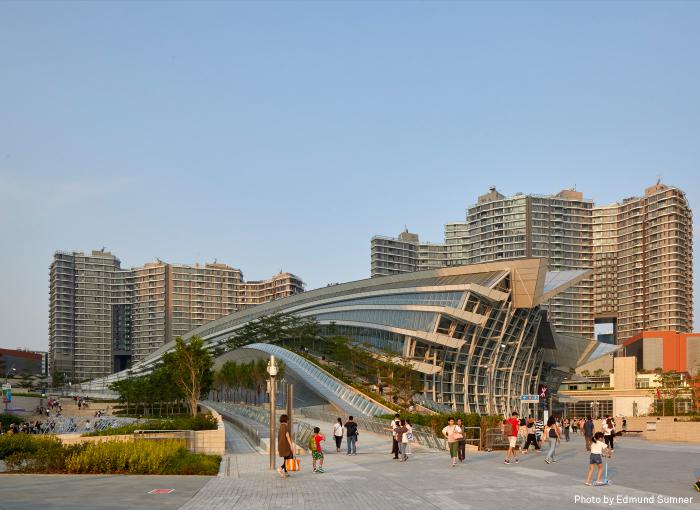
Designed by Andrew Bromberg at Aedas, Hong Kong West Kowloon Station is situated adjacent to the future West Kowloon Cultural District and next to the Victoria Harbour, and requires a design which is completely motivated by civic demand. As the ‘gateway’ to Hong Kong, the design compacted all of the supporting spaces more efficiently to allow for a very large void down into the departure hall below. The outside ground plane bent down to the hall and the roof structure above gestures toward the harbour. The result is an around 45-metre high volume which focuses all attention through the south façade toward views of the Hong Kong Central skyline and Victoria Peak beyond.
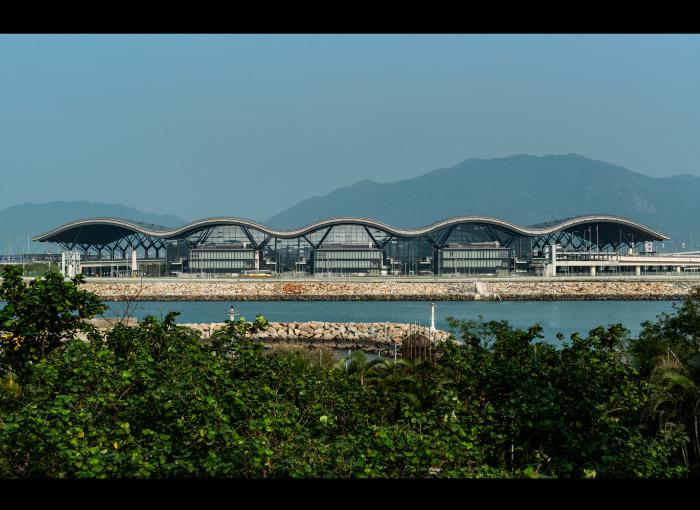
The Hong Kong-Zhuhai-Macao Bridge Hong Kong Port Passenger Clearance Building (PCB) houses the customs and immigration facilities for travellers leaving and entering Hong Kong by the bridge. Designed by Aedas in joint venture with Rogers Stirk Harbour + Partners, it is built on a new 150-hectare artificial island reclaimed from the open waters, and serves as a gateway for all those passing through it, providing Hong Kong with a new ‘front door’ celebrating travel and surrounded by water with views to a natural skyline of evergreen mountains and hills.
The PCB is constantly filled with movements – people arriving and leaving by buses, cars and taxis, and travellers waiting to get immigration clearance. The simple, clear circulation through the facility and the undulating flow of surrounding waters is reinforced by the waveform roof, enhancing legibility and providing intuitive wayfinding. Movement through the building is punctuated with four double height voids over reflecting pools which allow natural daylight to penetrate all levels of the building and ensure there is a visual connection between Departures on the first floor and Arrivals on the ground floor. These voids and water pools further reinforce the clarity of wayfinding.
The elegant modular roof form ideally lends itself to offsite pre-fabrication and has enabled an efficient construction process achieving a very high level of quality. Building sections were pre-fabricated in the factory, transported by ship to the reclaimed island and railed into position.
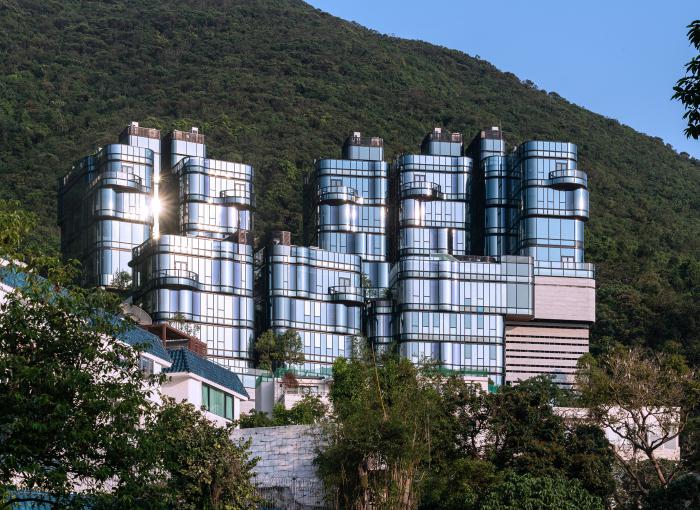
Pulsa is an eight-house residential development in Hong Kong. The houses, all with a highly sculptural building profile, enjoy spectacular view of Repulse Bay, one of the city’s most famous beaches.
The design of the houses are inspired by water. The curves are a motif synonymous with sea waves, creating everchanging perspectives from different viewing angles whilst the diffractions and reflections allowing residents to be surrounded by the natural beauty around. The resulting sculptural building profile presents a vivid image to both the residents and passers-by. Besides aesthetic merits, the curves also functionally improve the configurations and quality of interior space.
The design of The Beacon was inspired by the city’s post-war structures, setting an excellent example of contemporary interpretation of traditional architecture. In the early post-war years, it was common to create illegal iron balconies for residential units in Mongkok, a hyper-dense neighbourhood in Hong Kong, to maximise view and area. The building design reinterprets these structures in a modern way – the irregular protrusions create unobstructed views for each unit. Also inspired by the home gardens which people created on those iron balconies, a green wall on the podium façade is designed to further connect the building with the historical cityscape and offer more greenery at the pedestrian level.

Da Wang Jing Mixed-use Development, designed by Andrew Bromberg at Aedas, consists of four Grade-A high-rise office buildings, a high-rise residential apartment building and a multipurpose commercial exhibition complex. The design incorporates the oasis concept to accentuate the relationship between the site and surrounding greenery, and also to strengthen and guarantee the maximum visual permeability. The building forms of the five main towers and podium structures deliver an organic architectural statement with contemporary design, which echo with exclusive commercial auxiliary facilities and high-end apartments.
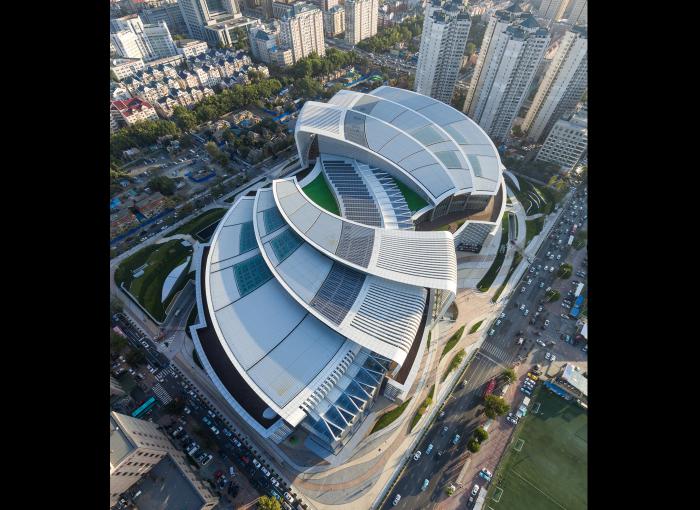
Olympia 66 offers shopping, dining and entertainment spaces. It creates a contemporary statement with an oriental overtone, with its grand curving geometric design reflecting the Chinese twin carp – a symbol of wealth and abundance in Chinese culture. The interplay of two swimming carp inspired a dynamic form which allows a loop circulation flowing through a continuous chain of retail, atrium and event spaces to the sky-plaza and central roof garden. The shells on the roof are layered to create clear storey glazing, allowing direct and reflected light into the two atria. The project is certified with a LEED Gold rating.
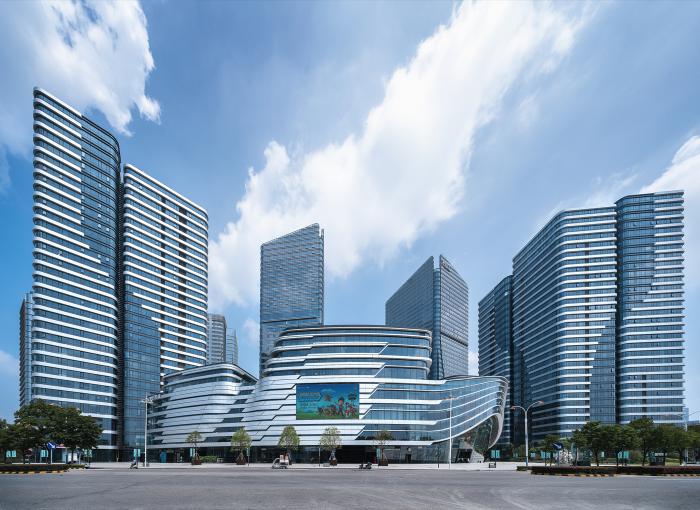
This mixed-use urban development in Suzhou Industrial Park combines hotel, office, retail, and serviced apartments programmes into a vibrant lakeside destination. Two residential towers and a serviced apartment tower are combined with a 150-metre office/hotel and a mall. The towers enjoy views towards adjacent Jinji Lake. The facade of the two taller towers are designed in a unified coordination to produce a twin-tower effect.
The architectural design embraces the tea culture of the city and reminds people of the famous terraced tea plantations. Horizontal lines dominate the facades and the differences in building heights create a three-dimensional terraced form. The development is porous and highly accessible, with a public landscaped boulevard running across the site from north to south.

Lè Architecture in the Nangang district of Taipei is a 70-metre tall office building. The design drew inspiration from the shape of river pebbles, developing a unique aesthetic concept that conveys the idea of roundness and elegance, as well as strength and character. The building’s egg-like shape implies that it is an incubator of knowledge and a metaphor of intellectual revival, which integrates well with the local context and marks an important milestone in the revitalisation of the fast-emerging Nangang district. The LEED Gold-certified building employs multiple strategies to add greenery to the façade and is focused on minimising energy demands.
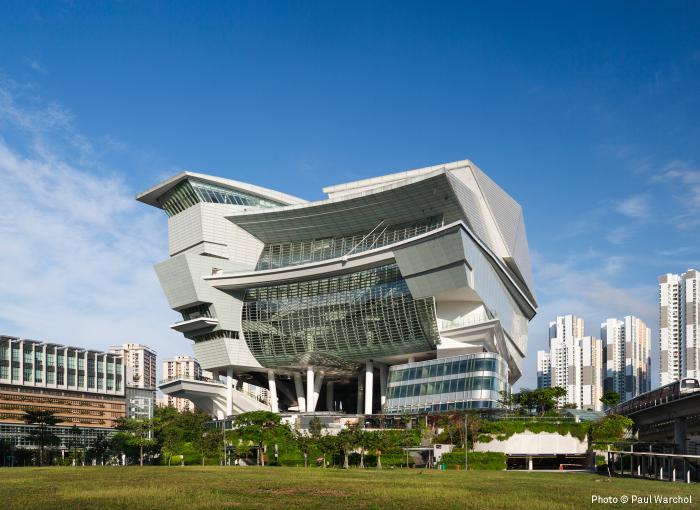
The design by Andrew Bromberg at Aedas for The Star celebrates the rich and diverse happenings inside the building with a multi-faceted, permeable and dynamic design, blurring the boundaries between public and private realms as well as retail and cultural components. The 62,000-square-metre development comprises The Star Performing Arts Centre with a 5,000-seat theatre, and The Star Vista with food and beverage based retail facilities. The south elevation is completely opened up and its facilities are clearly visible from outside. One can crawl under, transverse around and climb onto the complex via a series of ramps, escalators and terraces.

Sandcrawler, designed by Andrew Bromberg at Aedas, is a nine-storey complex and the regional headquarters and production base of the world-renowned Lucasfilm. The masterplanning guidelines for the development are strictly defined, restricting the height envelope and setbacks. They also laid out the minimum amount of mass required on the enclosure. The design tackled such guidelines, fulfilling various requirements yet retaining a strong civic identity for this headquarters building. The result is a tapering ‘horseshoe’ floor plan which achieves an average net to gross area efficiency of over 80%.